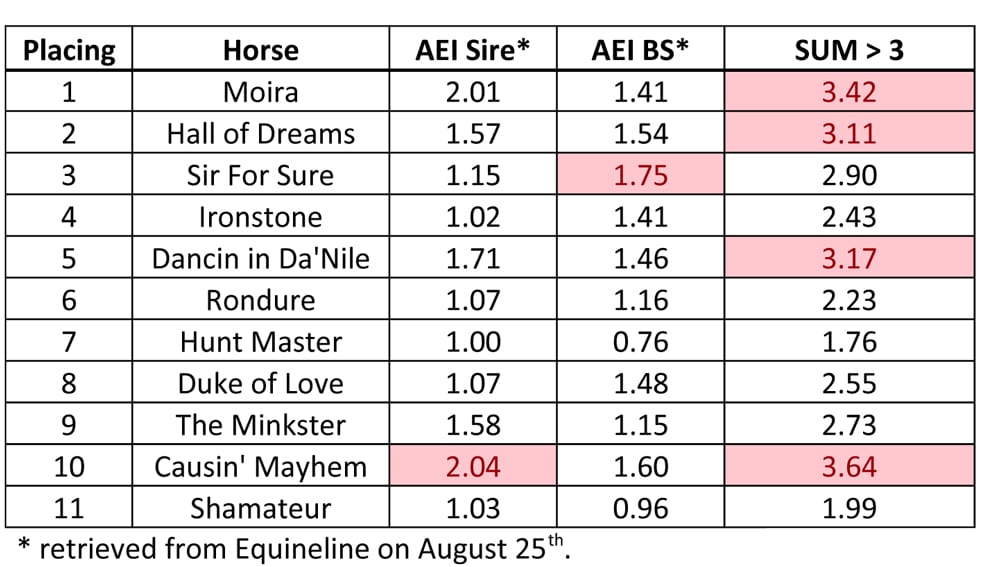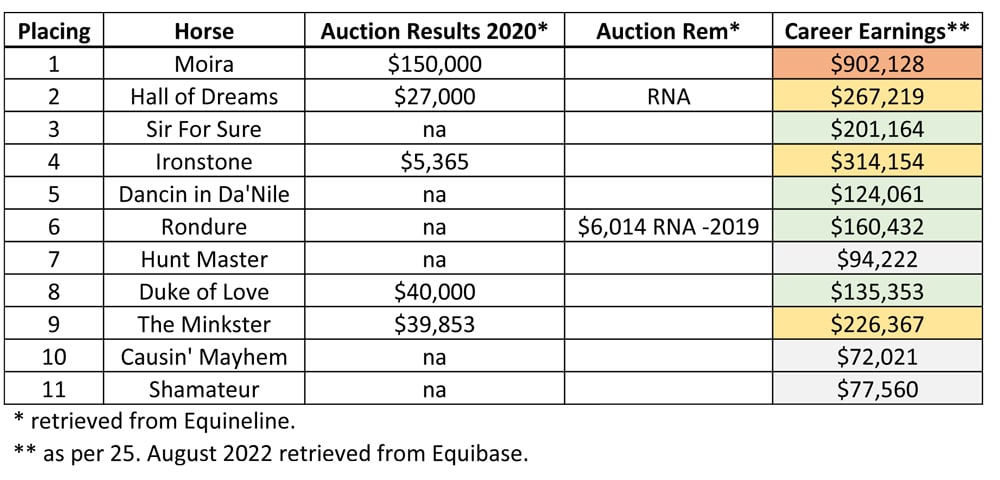Luck can produce an extraordinary runner, but know-how is what produces consistently successful horses.
Breeders as well as buyers are constantly looking for “the best” prospect. There are always the seemingly obvious “best” ones, but they usually come with a considerable price tag. And then there are all the other prospects, of which some will be equally or more successful than the most expensive ones.
To breed an extraordinary horse is mostly luck – but to breed or select successful horses over time, that is knowledge. This know-how is hard-earned and always takes into consideration more than one factor: it consists of reliable statistics as well as pedigree analysis and horsemanship skills.
Statistics are as scary as they are valuable. There is the saying: “Don’t trust a statistic that you haven’t screwed yourself.” The truth that lies in this saying is that every statistical approach comes from a certain point of view and is meant to prove or disprove this certain point of view. Therefore, every statistic has a bias – and to be aware of this is certainly beneficial.
The biggest traps in statistics are correlation and sample size. Correlation is the relationship between two (or more) factors; for example, how many stakes winners a certain combination of sire x broodmare sire produces. It is of utmost importance to establish meaningful correlations! Sample size means that the actual numbers on which the statistic is based has to be taken into account. There is a difference, for example, if a certain sire x broodmare sire combination produces 1 stake winner out of 1 starter or 6 stakes winners out of 100 starters. The 1 (of 1) can be a fluke or the start of an outstanding stud (or broodmare!) career, while the 6 (of 100) tell you that this stallion might not be an outstanding producer, but among the best ones.
Nowadays, statistics are readily available and widely used. Let’s have a look at what statistics can do by checking out the 2022 Queen’s Plate. This journey also leads us to why other factors are needed to spot or breed a successful prospect. But before that, let’s go back to some definitions.
Definition of a “nick”
A) Nicks are combinations of sires and broodmare sires that produce with the highest probability a successful foal. The Average Earning Index (AEI) is a useful statistical index to compare such combinations.
B) Nicks are the combination of certain bloodlines that produce with the highest probability a successful foal. The knowledge of proven patterns is useful to compare such combinations.
Hence, “nicks” are sire x mare combinations that allow predictions regarding the success of a racehorse. These systems are useful for breeding, buying and even predicting how successful a certain horse might be in a given field of starters.
Let’s first look at the AEI that was established in 1948 by Joe Estes; it still represents the industry standard. As the AEI is used widely, it is worth looking into its definition, its advantages and also its weakness.
Definition of Average Earning Index
The AEI measures the performance by comparing the average earnings of certain runners with all other runners of the same age that raced in the same year. This allows to compare performance from generation to generation and over decades or even centuries.
While the calculation of the AEI remained the same, its application increased significantly and now also covers broodmare sires, mares and nicks. There are two weaknesses of the AEI: one is that the statistical calculation is based on the average earnings rather than the median earnings and hence it can be skewed by one extraordinary earner. The other weakness is that this statistical index doesn’t reveal any reasons behind success or failure. The advantage is its timeless character as well as its reflection of overall racing potential. Please note that AEIs can change daily as it is a dynamic value that is regularly updated. The changes are usually minor.
Now, let’s have a look the AEI of the horses in the Queen’s Plate 2022:
I marked the top 10% of each column. This shows very well that there is no correlation between winning and any of the AEIs. But this table shows well the traps of statistics. For Ironstone the AEI Value of AEI Sire x Broodmare Sire is 11.03! The sample size, though, is 2 foals. Statistically this number is useless but it is intriguing so may be worth keeping Ironstone in mind.
The same number for Causin’ Mayhem (4.08) is statistically much more reliable as it is based on the performance of 56 foals and hence a much better indicator of possible race performance than the value for Ironstone. I greyed out all numbers below 7 and even 7 is very disputable in regards to statistics – in this field of horses though it is a line that I did draw admitting and recognizing that the statistical relevance is limited!
But this is how the real world works: breeders and buyers often do not have stats that are perfect. It is important to make the difference between a number one can rely on and a number that has to be taken with a grain of salt but might indicate potential.
Obviously, AEI’s taken for themselves, are not much of a gain. They are not useless though! It all depends on the questions you ask. These numbers reflect the potency of the sire and the dam. Only the broodmare sire is considered though and this is because of the sample size; it is the trade-off for the other 50% of the dam’s genetic makeup.
Most buyers and breeders agree on the fact that you need a good stallion as well as a good mare to produce a good foal. In regards to the table above, this means that the AEI of the Sire and the AEI of the Broodmare Sire should be added for a more representative prediction of the potency of the foal. The following table shows how asking the right questions can change the picture drastically:
In the above table, I marked in both AEI columns again the top 10% but in the column where the sum is stated, I marked all values above 3. The value of 3 results from personal experience but certainly can be adjusted to one’s own liking. This sum correlates much better with racing potency than each AEI alone. Still, it is by far not a guarantee for performance…
For breeding a Triple Crown Winner one needs at least as much luck as for winning the lottery. Nature works on probabilities – and so does the business of breeding or buying. The most successful breeder or buyer is the one who gets on average better racers than their peers. To breed or buy those – on average – more successful prospects is a highly skilled art.
And as you are guessing … the AEIs are not the end of the story. Let’s have a quick look at the comparison between auction results and career earnings (as of 25. August 2022):
Moira was considered an obvious choice and the auction result reflects that. But then Hall Of Dreams, Ironstone and The Minkster achieved so far decent career earnings, too. Hall Of Dreams has a SUM of AEIs of above 3 and would have fallen into the closer selection. But neither Ironstone nor The Minkster could have been identified as interesting prospects through the AEI system. In order to scout promising prospects or breeding opportunities, it is necessary to also take into consideration additional factors!
***
Chantal Spleiss owns Rocking Wolf Ranch in Chesley, ON, and operates Magic Match Genetics, which analyzes pedigrees of Thoroughbreds and Quarter Horses.





